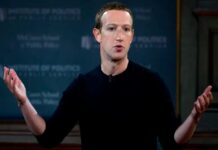A pernicious force was hollowing out American democracy. It had neutered Congress, and lobotomized the electorate. Lawmakers had become incapable of taking action on many of the day’s most pressing issues — and voters incapable of holding their representatives accountable for their incapacity. The connection between an American’s substantive beliefs, and her decisions in the ballot booth, was razor-thin and ever-fraying. If our nation’s noble experiment with self-rule was to be salvaged, the leadership of both parties would need to take responsibility for their role in perpetuating this destructive force — which is to say, they would need to admit that they’d taken bipartisanship much too far.
This is only a slight exaggeration of the consensus view among American political scientists, circa 1950. And although their perspective might look alien from a Trump-era vantage point, it’s quite comprensible from a Truman-era one.
In the middle of the 20th century, America was home to liberal Republicans and conservative Democrats. The most important fault-lines in Congress weren’t partisan but regional; on many issues, southern Democrats and western Republicans united in battle against northern (and typically, liberal and/or labor-aligned) members of their respective caucuses. On economics, the two parties’ agendas were distinct, but far less disparate than they are today. On civil rights and immigration, the divisions within each side of the aisle were more important than those between them.
This utter dearth of partisan polarization undermined democratic accountability. A liberal could vote for Democratic candidates in New York, and unwittingly empower arch-segregationists in the Senate; many voters had no clear heuristic telling them which party would best represent their interests and ideological goals, nor which one was to blame for Congress’s failure to advance such aims.


















